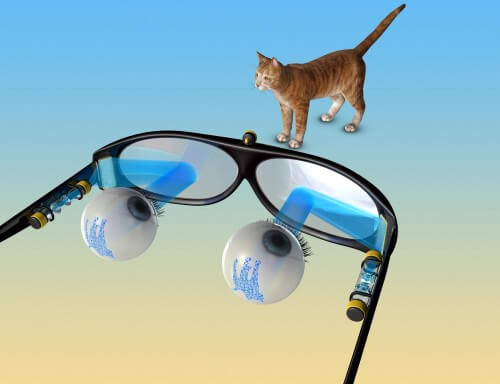The work published in Nature Communications is based on optogenetics - a new and developing field in neuroscience, and is a first step towards non-invasive vision restoration in degenerative diseases of the retina
 Researchers from the Faculty of Biomedical Engineering at the Technion have developed a new method for non-invasive activation of a blind retina, by combining holographic optics and optogenetics - a new and developing field in the field of neuroscience. This is reported by the journal Nature Communications
Researchers from the Faculty of Biomedical Engineering at the Technion have developed a new method for non-invasive activation of a blind retina, by combining holographic optics and optogenetics - a new and developing field in the field of neuroscience. This is reported by the journal Nature Communications
"Degenerative diseases of the outer retina are among the main causes of blindness in the Western world," says Professor Shai Shoham. "These diseases are characterized by the degeneration of the layer of receptor cells that are used as light sensors, while the rest of the other layers of cells in the retina, and in particular the ganglion cells, are preserved. Artificial stimulation of surviving nerve cells is a potential strategy for bypassing (damaged) retinal nerve cell circuits. Restoring the sight that was lost to a basic functional level has recently become possible through the surgical insertion of artificial electronic implants that electrically activate the surviving cells, similar to the cochlear (cochlear) implants intended for the treatment of the deaf. Our method is different and innovative because it aims to activate the surviving cells without the need for direct contact of the implant with the retina and it may eliminate the need for surgery and transplantation in the future."
"The optogenetic approach is based on the genetic expression of light-sensitive ion channels (proteins derived from algae), in the ganglion cells of the retina," explains Dr. Ina Rautsky-Geffen, who studied the combination of holography and optogenetics and their application in blind retinas under the guidance of Professor Shem and with the assistance of other members of the research team: Lior Golan, Dr. Nairoz Farah, Adi Shechter, Limor Tzur and Dr. Inbar Brosh. "The transparent and light-insensitive ganglion cells in which the channel is expressed, thus become light sensors and may practically bypass the role of the outer retina. In order to create a meaningful visual perception in the brain, we must be able to activate a large amount of neurons simultaneously, as happens in the normal vision process. In addition, this must be done with a high temporal and spatial precision that will mimic the 'normal' activity of the retina. The results of our research demonstrate that optical stimulation of these cells using a unique holographic projector allows parallel activation of large groups of cells with spatial precision at the single cell level, which is not possible with electrical activation. This is how we provided the first demonstration in principle of holographic optical stimulation that allows the recovery of cellular activity identical to the activity of a normal retina, as a basis for the restoration of vision in June."
The holographic projection system developed during the research is based on the principle of phase modulation of light, which after passing through an optical system creates an image in the focal plane. This system has a relatively high efficiency and is not "wasteful" in terms of energy. The researchers point out that this efficiency will be important at a more advanced stage, in which it will be necessary to transform the system into a portable excitation system, which will be an integral part of an optical "prosthesis".
"The application of the method is not limited to the restoration of vision only," emphasizes Professor Shoham. "Holographic excitation strategies can enable flexible control over the activity of large networks of nerve cells that artificially express light-sensitive channels, and pave the way for devices and other scientific and medical applications that will help 'crack the code' in the networks of nerve cells in the brain."
